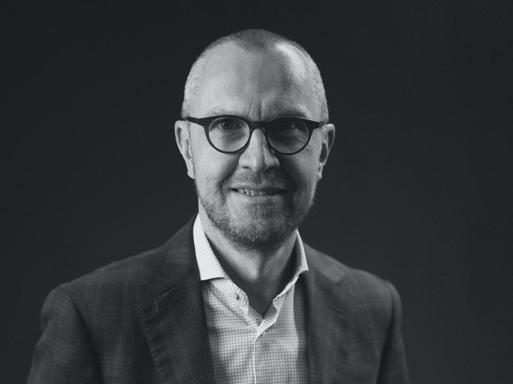Read the full newsletter here
‘Healthcare is becoming location-agnostic’
With healthcare shifting beyond the walls of hospitals, Dr. Jean-Luc Dourson, Managing Director at BIONEXT, shares his vision of a sector in full transformation. From decentralized diagnostics to patient-centric infrastructure, he highlights the challenges and opportunities shaping the future of healthcare real estate in Luxembourg and beyond.

Dr. Jean-Luc Dourson
Managing Director at BIONEXT
How are healthcare needs evolving, and what major trends are shaping the sector?
Healthcare is undergoing a profound transformation, driven by demographic shifts such as population aging, the increasing prevalence of chronic diseases, and the rise of new pathogens and antibiotic resistance. At the same time, medical technology is advancing rapidly, and patients are becoming more proactive and selective in their care choices.
These dynamics are reshaping the entire care model. We're witnessing a shift from hospital-centric, inpatient care to more accessible outpatient solutions. Care is moving out of traditional buildings into virtual and mobile formats. The approach to treatment is becoming more proactive, leveraging AI and remote monitoring to anticipate issues rather than simply reacting to them. Patients are now placed at the center of care, which is increasingly personalized, continuous, and supported by digital platforms. Moreover, the industry is evolving from fee-for-service systems to value-based models, and from public monopolies to frameworks that offer greater freedom of choice.
Naturally, these changes are influencing the built environment. There's a growing need for outpatient facilities, senior living residences, wellness-oriented spaces, and smart infrastructure that can support telemedicine and remote diagnostics. The real estate response must reflect not just medical requirements, but also a new cultural paradigm of care.
With telehealth and decentralized care on the rise, how do you see the concept of a “healthcare location” evolving?
That’s a sharp question—and a huge trend reshaping the very definition of “healthcare real estate.” The traditional healthcare location—big hospital, centralized medical campus—is giving way to a more diffused, retail-style, tech enabled model. Healthcare is becoming location-agnostic, no longer bound to hospitals locations. Thanks to rapid diagnostics, wearables, and at-home testing, diagnosis and monitoring can happen anywhere. Healthcare providers like a medical lab are becoming mobile via home visits, mobile vans and embedded services in schools, offices, or retail centers.
We’re moving towards a network of interconnected care points, where each node plays a role. The home is becoming a core site for prevention and monitoring, especially for chronic illness or post-acute care. Community centers and small neighborhood clinics offer fast diagnostics and treatments close to where people live. Mobile units extend outreach capacity, and digital platforms ensure that virtual care is always within reach. In this model, “location” is not a fixed place, but an integrated system of physical and digital interactions.
What specific opportunities do you see in developing healthcare infrastructure in Luxembourg?
Luxembourg offers a unique mix of opportunities. Its central European location facilitates cross-border care, particularly with France, Belgium, and Germany. The government is highly supportive of innovation, particularly in biotech and digital health, with institutions like the Luxembourg Institute of Health and the Integrated BioBank playing a pivotal role in fostering R&D partnerships. The recent HIVE initiative brings a network effect in the health tech sector to boost sciences innovation projects in digital health.
There’s also strong local demand for premium, preventive care services, supported by a stable, high-income population and a robust data privacy framework aligned with GDPR.
How do these trends influence your decisions when it comes to selecting and designing real estate for healthcare?
Trends like decentralization and digitalization are now central to how we think about location and infrastructure.
The rise of outpatient and ambulatory care has led us to prioritize flexible, multi-use spaces that can integrate labs, medical offices, and diagnostic centers. Proximity to both urban centers and border zones is key, especially for facilities meant to serve a broader regional population.
Speed and accessibility are also critical. Diagnostic services must offer rapid turnaround, which places a premium on efficient logistics and well-situated patient access points. Increasingly, we’re choosing locations in retail zones or residential areas where patients can easily drop off or pick up samples. Regulatory compliance, green building standards, and ergonomic design are now standard requirements, not afterthoughts.
Finally, decisions are increasingly data-driven. Demographics, insurance coverage patterns, and referral networks all influence site selection. In short, real estate is no longer just about space — it’s about performance, adaptability, and alignment with both medical needs and patient expectations.
As a healthcare operator, what would you like to see from real estate developers to better support sector growth?
What we really need are partners who understand the complexity and dynamism of healthcare. Developers can add real value by thinking beyond traditional leasing models and embracing the idea of purpose-built medical clusters. These are environments where general practitioners, labs, pharmacies, and specialists co-exist, with shared services and coordinated patient flows.
Flexibility is essential. Healthcare evolves quickly, as the COVID-19 pandemic showed us. Spaces should be modular and scalable, allowing for reconfiguration as technologies and care protocols change. Developers who engage early with healthcare providers during the design phase can ensure that layouts anticipate future needs, thus avoiding costly retrofits later on.
Zoning remains a key factor — healthcare projects benefit immensely from pre-approved or fast-track zoning processes. Location matters too, of course: being near public transport and major roads, or embedded within mixed-use communities, makes care more accessible and supports a wellness-focused urban fabric.
Finally, we look for long-term partnerships. Co-investment models and infrastructure-sharing arrangements can help stabilize operations and encourage providers to invest more fully in services and innovation.